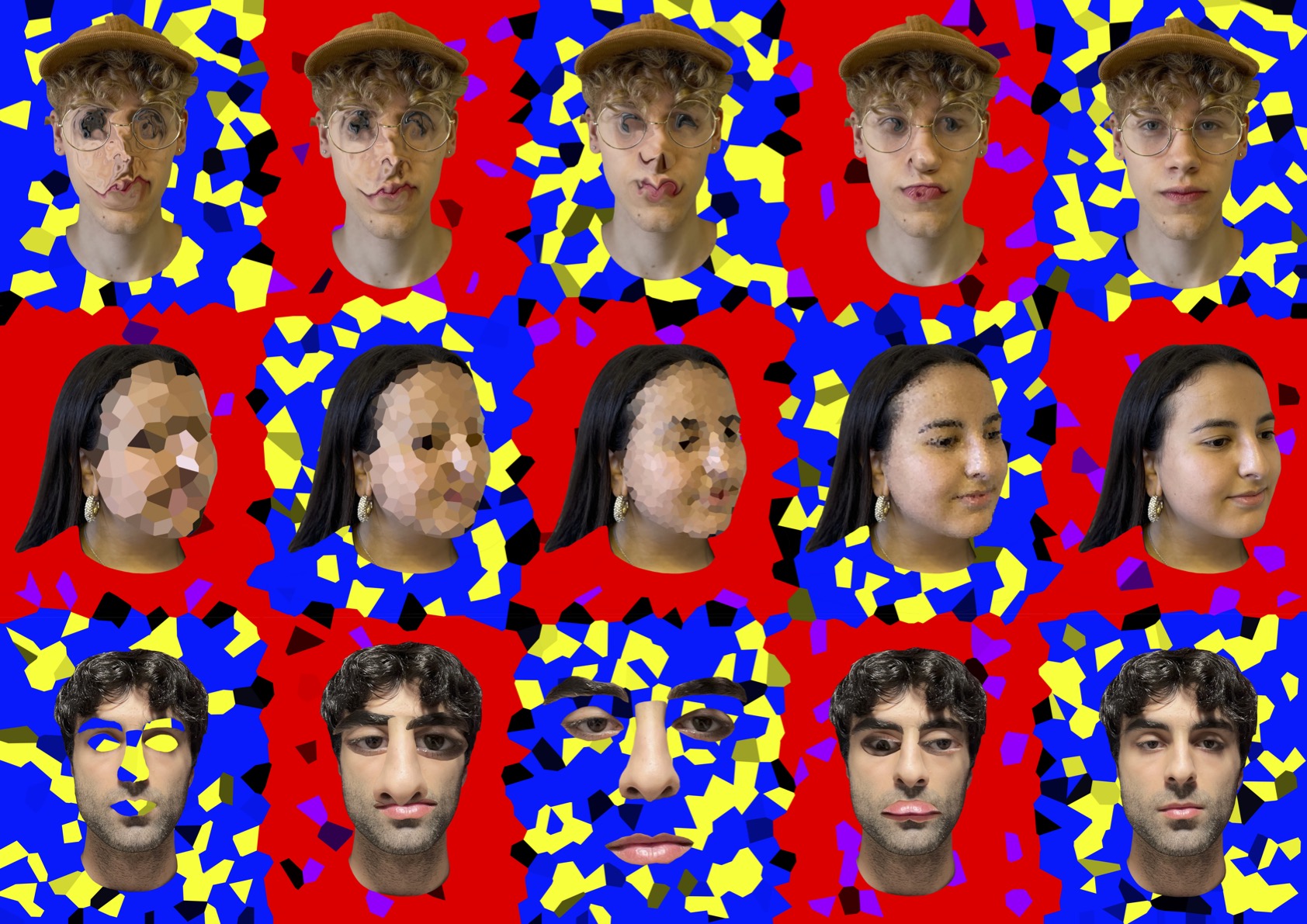Experiencing Facial Blindness
The editing of facial features through distortion and blurring, alongside a distracting background, attempts to highlight the confusion that may be felt by a person who has facial blindness. We aimed to reflect their disorientation when looking at other people’s faces.
Our decision to include stages of the perceptual process represents an attempt to understand their struggle to both distinguish between faces and associate faces with individuals. Accessories such as earrings, caps and glasses are unaltered as we have learned that some people with facial blindness find it helpful to use alternative visual strategies to identify individuals – such as memorizing commonly worn accessories.
With thanks to, Ella, Anna Jodie, Zoey, Luke and Holly
This collaborative piece was exhibited at the Foundations of Medicine Conference 2022
Presented by Hammad, Anna and Zoey
Comments
Add legacy comments here

This artwork depicts how people with facial blindness (prosopagnosia) perceive their own and others faces differently every time due to injury to their brain. The artwork shows the extent to which their brain can change all facial features to make them almost unrecognisable. The mosaic-like artwork could indicate how people feel as if they become dissociated from their body due to not being able to recognise themselves, which could in turn lead to mental health disorders. The variety of different ways that the faces are changed in this artwork shows how this condition affects everyone differently, which could lead to lesser understanding and sympathy for people with this condition as it is so difficult to understand their experiences as not one experience is the same. In addition to the mental health disorders, this could lead to disorders such as body dysmorphia, affecting social situations and daily life experiences.
This artwork explores how people living with facial blindness might perceive themselves and the faces in the world around them. Each face in the grid is distorted in a unique way—some are pixelated, others are stretched or warped. As the audience of this artwork we can get a sense of the confusion faced by someone living with facial blindness. The randomness of these patterns and shapes reflects on how unique the challenges posed for a person living with this may be. The bright background colours of red, blue, and yellow make the images even more eye-catching.